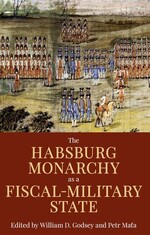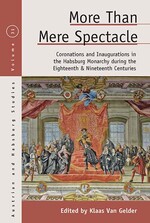
Priv.-Doz. Mgr. Ph.D.
Petr Maťa
petr.mata(at)oeaw.ac.at
+43-1-51581-7334
Petr Maťa is a research associate in the research unit History of the Habsburg Monarchy.
Brief Biography
Petr Maťa studied history and historical auxiliary sciences at Charles University in Prague where he received his PhD. He was a visiting scholar and project researcher at the Leibniz Institute for the History and Culture of Eastern Europe (GWZO) in Leipzig, and from 2002 to 2005 coordinator of a Czech-German post-graduate programme (Prague–Saarbrücken). He has been based in Vienna since 2006, firstly as a Lise Meitner fellow; from 2008 to 2018 he was employed as a non-tenured assistant professor (Universitätsassistent) at the Institute of History and the Institute of Austrian Historical Research at the University of Vienna. He was a EURIAS fellow at the Institute for Advanced Study at the Central European University in Budapest (from 2012 to 2013) as well as visiting professor at the CEU (winter trimester 2017). In March 2018, he joined the Institute of Habsburg and Balkan Studies and is co-editor of the compendium project ‘Verwaltungsgeschichte der Habsburgermonarchie in der Frühen Neuzeit’. In January 2021, he obtained the Venia Legendi for the field of modern history. In spring term 2022 he lectured as a visiting professor at the University of Klagenfurt.
Research Interests
Period: early modern period
Area: Habsburg Monarchy
Topics: regional grounding of Habsburg rule, provincial Estates and diets, cultural, social and religious history of the aristocracy, history of administration, fiscal-military state, multilingualism, Catholic notions of the afterlife in the era of confessionalism, autograph letters of Leopold I.
Selected Publications
- The Habsburg Monarchy as a Fiscal-Military State. Contours and Perspectives 1648–1815, hg. von William D. Godsey–Petr Maťa (Proceedings of the British Academy 247, Oxford 2022)
- Petr Maťa, The Care of Thrones: The Plethora of Investitures in the Habsburg Composite Monarchy and Beyond from the Sixteenth to the Eighteenth Century, in: More Than Mere Spectacle. Coronations and Inaugurations in the Habsburg Monarchy during the Eighteenth and Nineteenth Centuries, hg. von Klaas Van Gelder (Austrian and Habsburg Studies 31, New York–Oxford 2021) 29–66.
- Verwaltungsgeschichte der Habsburgermonarchie in der Frühen Neuzeit, Bd. 1/1–2: Hof und Dynastie, Kaiser und Reich, Zentralverwaltungen, Kriegswesen und landesfürstliches Finanzwesen, hg. von Michael Hochedlinger, Petr Maťa und Thomas Winkelbauer (Mitteilungen des Instituts für Österreichische Geschichtsforschung, Erg.-Bd. 62/1–2, Wien 2019).
- Petr Maťa, The false Orsini from over the Alps: Negotiating aristocratic identity in late medieval and early modern Europe. Römische historische Mitteilungen 55 (2013) 155–218.
- Die Habsburgermonarchie 1620 bis 1740. Leistungen und Grenzen des Absolutismusparadigmas, hg. von Petr Maťa–Thomas Winkelbauer (Forschungen zur Geschichte und Kultur des östlichen Mitteleuropa 24, Stuttgart 2006). Inhaltsverzeichnis
- Petr Maťa, Svět české aristokracie (1500–1700) [Die Welt der böhmischen Aristokratie, 1500–1700] (Praha 2004). Magnesia Litera-Preis 2005
Further Publications
Books
Books
Editions and Collections
Editions and Collections
Articles
Articles
- Mata Petr: Epizentrum und Bebengebiet. Die böhmischen Länder im Dreißigjährigen Krieg, in: Keller Katrin und Martin Scheutz (eds.): Die Habsburgermonarchie und der Dreißigjährige Krieg, Veröffentlichungen des Instituts für Österreichische Geschichtsforschung 73, Wien: Böhlau 2019, S. 53-74.
- Maťa Petr: Die Habsburgermonarchie, in: Hochedlinger Michael, Petr Maťa und Thomas Winkelbauer (eds.): Verwaltungsgeschichte der Habsburgermonarchie in der Frühen Neuzeit, Bd. 1/1, Mitteilungen des Instituts für Österreichische Geschichtsforschung, Wien: Böhlau 2019, S. 29-62.
- Maťa Petr: Der Adel in der Habsburgermonarchie: Standeserhebungen und adelsrechtliche Regelungen, in: Hochedlinger Michael, Petr Maťa und Thomas Winkelbauer (eds.): Verwaltungsgeschichte der Habsburgermonarchie in der Frühen Neuzeit, Bd. 1/1, Mitteilungen des Instituts für Österreichische Geschichtsforschung, Wien: Böhlau 2019, S. 117-148.
- Maťa Petr: Die Böhmische (Hof-)Kanzlei, in: Hochedlinger Michael, Petr Maťa und Thomas Winkelbauer (eds.): Verwaltungsgeschichte der Habsburgermonarchie in der Frühen Neuzeit, Bd. 1/1, Mitteilungen des Instituts für Österreichische Geschichtsforschung, Wien: Böhlau 2019, S. 461-488.
- Maťa Petr, Michał Witkowski: Die Schlesische Kammer und die königlichen Kammergüter in Schlesien, in: Hochedlinger Michael, Petr Maťa und Thomas Winkelbauer (eds.): Verwaltungsgeschichte der Habsburgermonarchie in der Frühen Neuzeit, Bd. 1/2, Mitteilungen des Instituts für Österreichische Geschichtsforschung, Wien: Böhlau 2019, S. 908-917.
- Maťa Petr: Landesstiefmutter - oder doch Retterin des böhmischen Staates? Das Bild Maria Theresias und ihrer Zeit in der tschechischen Historiographie, in: Preinfalk Miha und Boris Golec (eds.): Marija Terezija. Med razsvetljenskimi reformami in zgodovinskim spominom, Ljubljana: ZRC SAZU, Zgodovinski inštitut Milka Kosa, Založba ZRC 2018, S. 51-68.
- Keller Katrin, Petr Mata, Martin Scheutz: Der habsburgische Adel und die Religion. Vorwort zu einem wenig erforschten Thema, in: Keller Katrin, Petr Mata und Martin Scheutz (eds.): Adel und Religion in der frühneuzeitlichen Habsburgermonarchie, Veröffentlichungen des Instituts für Österreichische Geschichtsforschung, Wien: Böhlau 2017, S. 11-20.
Other Publications
Other Publications
- Adlgasser Franz et al.: Was war die Habsburgermonarchie? 16.-20. Jahrhundert - What was the Habsburg Monarchy? 16th-20th centuries, 2019, https://habsmon.hypotheses.org/.
- Maťa Petr: Epistulae et acta Caesaris Speciani 1592–1598. Pars I–III: Mai 1592–Dezember 1594, hg. von Alena PAZDEROVÁ (Epistulae et acta nuntiorum apostolicorum apud imperatorem 1592–1628. Tomus I.), Archivum Nationale, Pragae 2016. CLXIII, 2073 S. ISBN 978-80-7469-045-7, Mitteilungen des Instituts für Österreichische Geschichtsforschung126/2 (2019), S. 369-371.


